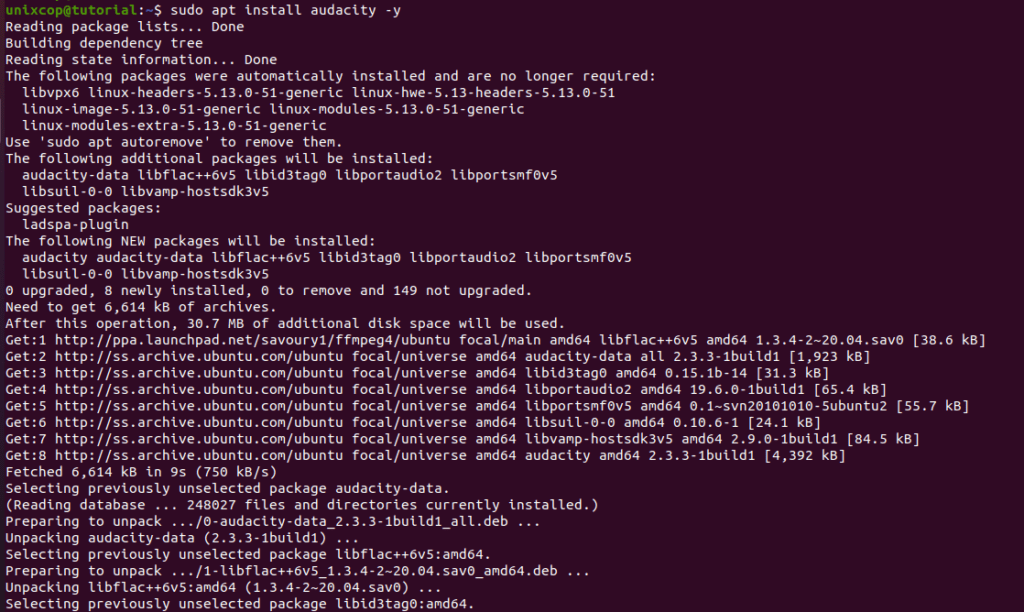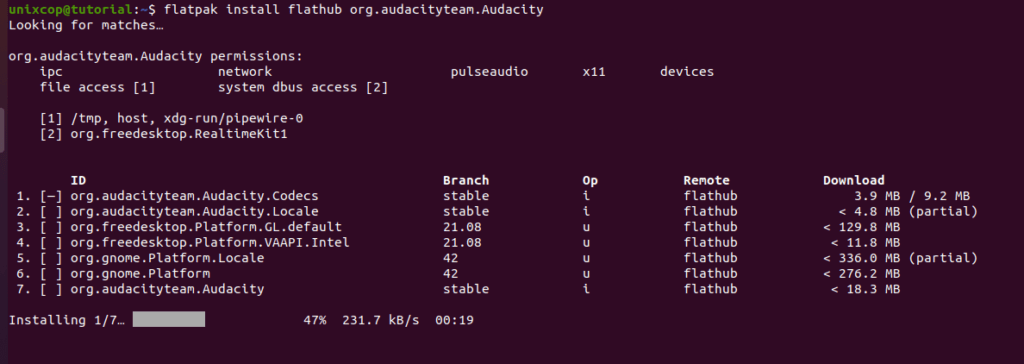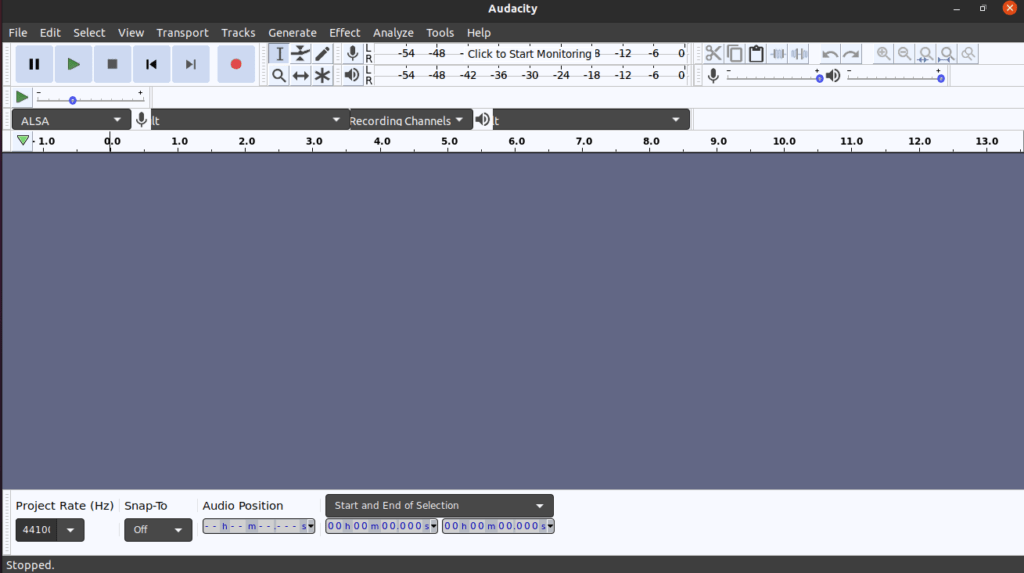In this guide, we will show you how to install Audacity in Ubuntu systems.
Audacity is a free, open source, cross-platform audio software. It is an easy-to-use, multi-track audio editor and recorder for Windows, macOS, GNU/Linux and other operating systems.
In addition to recording audio from multiple sources, Audacity can be used for post-processing of all types of audio, including effects such as normalization, trimming, and fading in and out.
Install Audacity on Ubuntu – APT method
Follow the steps below to get started with Audacity:
- Update your Ubuntu system packages with running the below command:
sudo apt update -y && sudo apt upgrade -y- Audacity package is available on Ubuntu base repository. So You can install it directly as follows:
sudo apt install audacity -y
Install Audacity- Snap method
Also you can install it with snapd manager:
Snap is a software packaging and deployment system developed by Canonical for operating systems that use the Linux kernel. The packages, called snaps, and the tool for using them, snapd, work across a range of Linux distributions and allow upstream software developers to distribute their applications directly to users. Snaps are self-contained applications running in a sandbox with mediated access to the host system.
So, Snaps are applications packaged with all their dependencies to run on all popular Linux distributions from a single build. They update automatically and roll back gracefully.
- Snaps are discoverable and installable from the Snap Store, an app store with an audience of millions, So install snap then install Audacity via snap manager as shown below
sudo apt update -y sudo apt install snapd -y sudo ln -s /var/lib/snapd/snap /snap sudo snap install core sudo snap install audacity

Install Audacity-Flatpak method
NOTE: Also you can install Audacity with Flatpak
Flatpak, formerly known as xdg-app, is a utility for software deployment and package management for Linux. It is advertised as offering a sandbox environment in which users can run application software in isolation from the rest of the system.
- So install the Flatpak manager with running the following command:
sudo apt install flatpak -y- Enable Flatpak using the following command
sudo flatpak remote-add --if-not-exists flathub https://flathub.org/repo/flathub.flatpakrepo- Install Audacity using the following flatpak command.
flatpak install flathub org.audacityteam.Audacity
Access Audacity
- Access Audacity through the command line by running the command
audacity- Also you can search on the system search bar by typing Audacity as follows

- Alternatively, Flatpak users will need to launch using the command below:
flatpak run org.audacityteam.Audacity- Audacity will be launched as shown below

How to Remove (Uninstall) Audacity
- Remove Audacity with APT Remove Method:
sudo apt autoremove audacity --purge -y- Remove Audacity with Snap Remove Method:
sudo snap remove --purge audacity- Remove Audacity with Flatpak Remove Method:
flatpak uninstall --delete-data org.audacityteam.Audacity -y
flatpak remove --unusedInstall Audacity -Conclusion
That’s it
Thanks.



